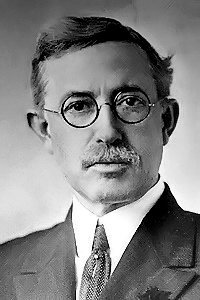Blog
“The Meaning of "In the Garden"”
Categories: Bulletin Articles, M. W. Bassford
Some hymns are lightning rods for criticism. They contain an odd mix of attributes. Something about them is strongly appealing enough that they are sung, while they contain something else that offends the sensibilities of other Christians. As opposed to the bell curve of popularity that most hymns possess, these hymns have a V curve. Either you love ‘em, or you hate ‘em! In my experience, such hymns include “Days of Elijah”, “Thomas’ Song”, and the king of them all, “In the Garden”.
“In the Garden” has been part of the worship repertoire in every church of which I have been a member. Nonetheless, it is the subject of frequent complaint online. Some brethren believe it teaches direct personal revelation. Others wonder how they can claim that their joy in Jesus is more than anyone else ever has known.
Many of these issues resolve themselves once we realize what the subject of the hymn actually is. Those who are so inclined can find the words of C. Austin Miles, the author himself, at www.hymnologyarchive.com/in-the-garden. To summarize, though, the hymn is about the encounter between Mary Magdalene and the risen Jesus in John 20:11-18, with the singer invited to put themselves in the position of Mary.
Thus, we sing about Jesus speaking to us because on that occasion, Jesus did literally speak to Mary. The hymn insists that no one else ever has known such joy because Mary was the first person (probably) to see the risen Lord. Everything in the hymn suddenly makes a whole lot more sense!
There is nothing particularly unusual about putting ourselves in the position of Bible characters as we sing. None of us have a problem with singing “Dare to Stand Like Joshua” even though we are not literally “tenting by the way” (unless we happen to be on a camping trip). As we sing “When I Survey the Wondrous Cross”, we cannot literally see the blood flowing from the head, hands, and feet of Jesus, but we call each other to “See!” regardless.
We recognize that there can be considerable spiritual value in these imaginative flights. The true problem with “In the Garden” is not that it adopts Mary’s point of view. It is that you can read the lyrics and sing them attentively without having the slightest clue that you’re singing about Mary. I myself did for decades before somebody clued me in.
This is not such an issue when it comes to “In the Garden” itself. A congregation that has been enlightened (by a bulletin article, say) can sing the hymn with spirit and understanding. It does, however, highlight an important trait of good hymns generally. They must be meaningful, and they must be clear enough that the singer can understand the meaning while singing. Hymns are no place for poetic obscurity! As lovely as “In the Garden” is, it would have been a much better hymn if it had been a clearer hymn. When it comes to hymns that share its faults without sharing its virtues, there are better choices.





